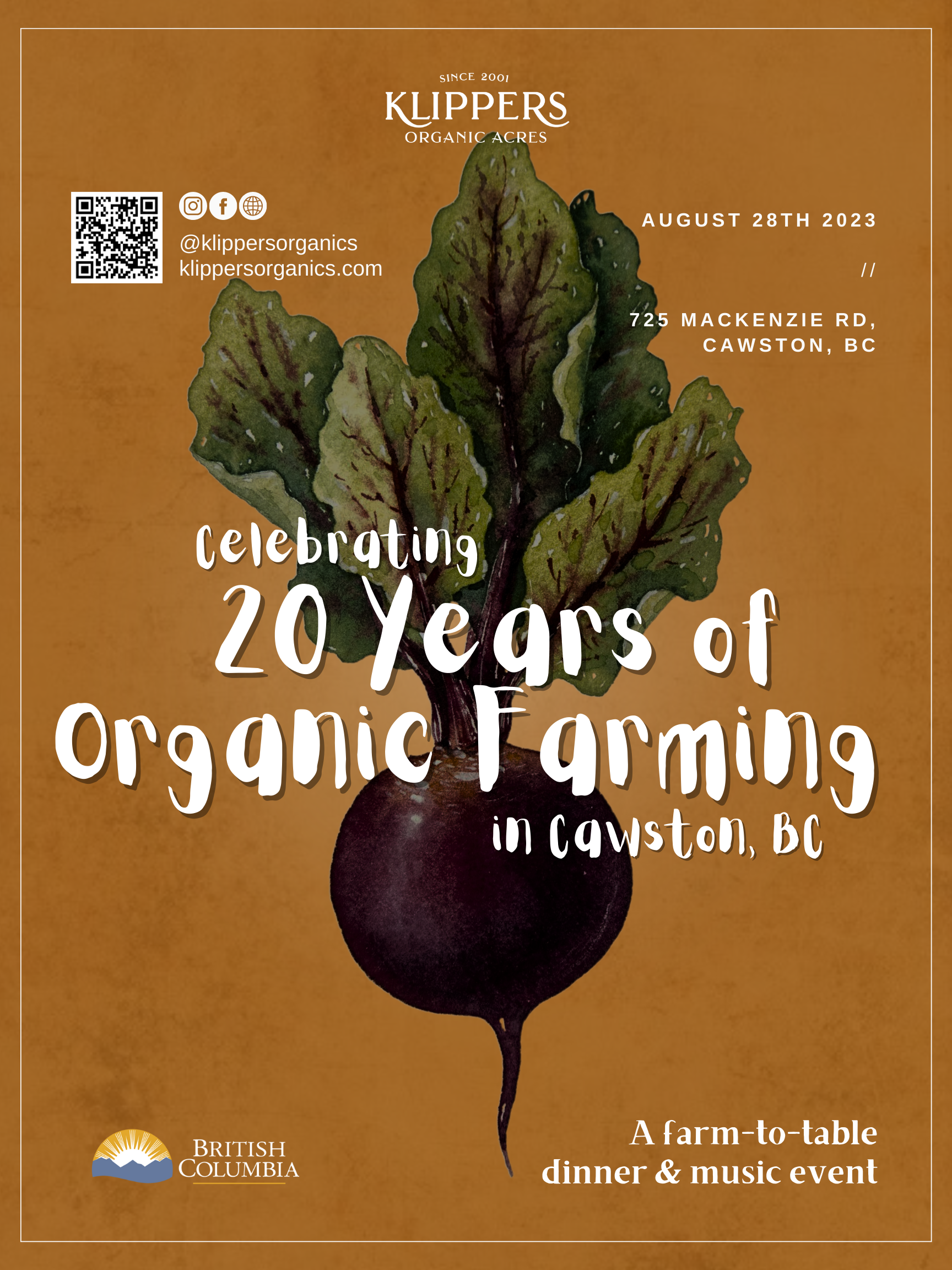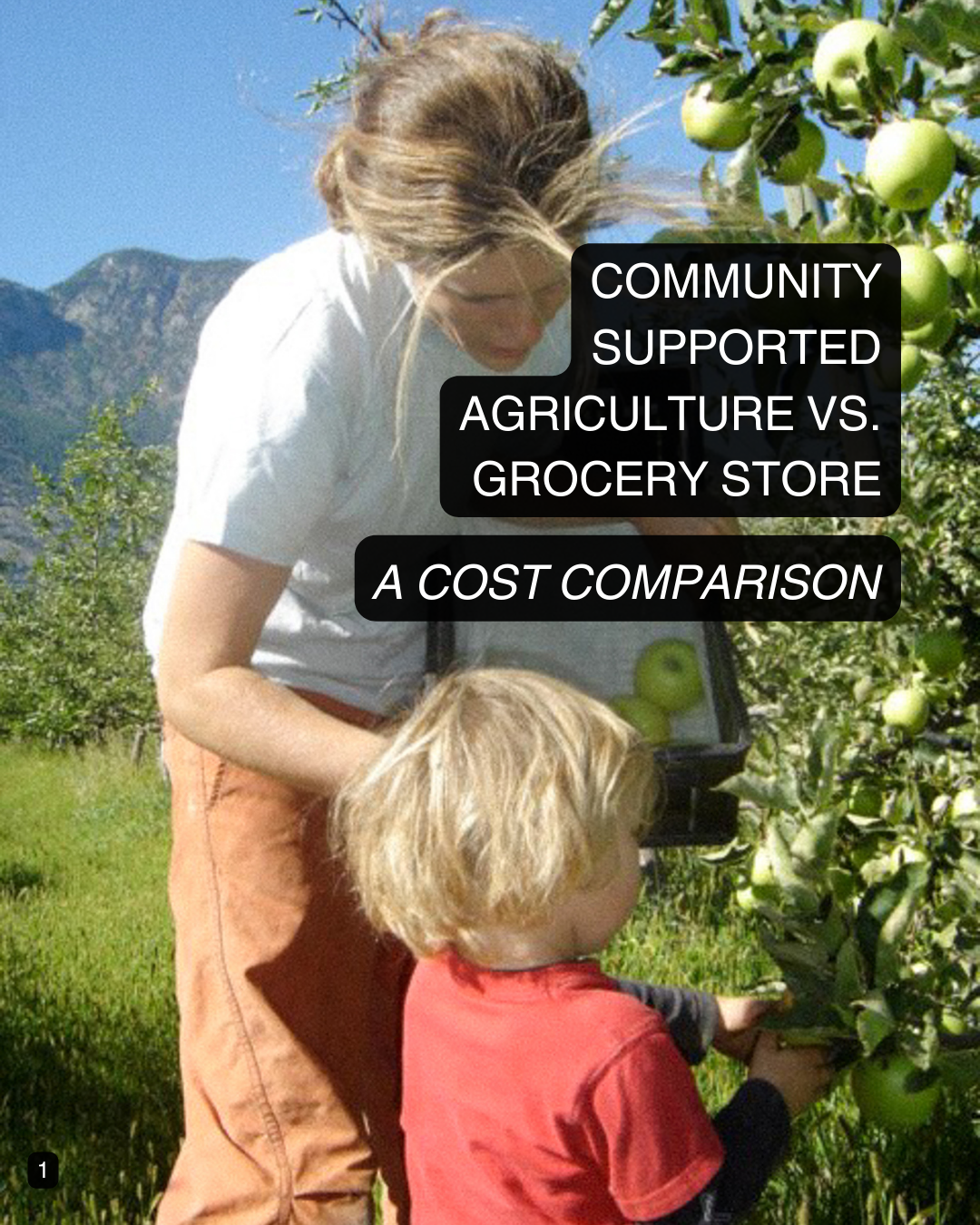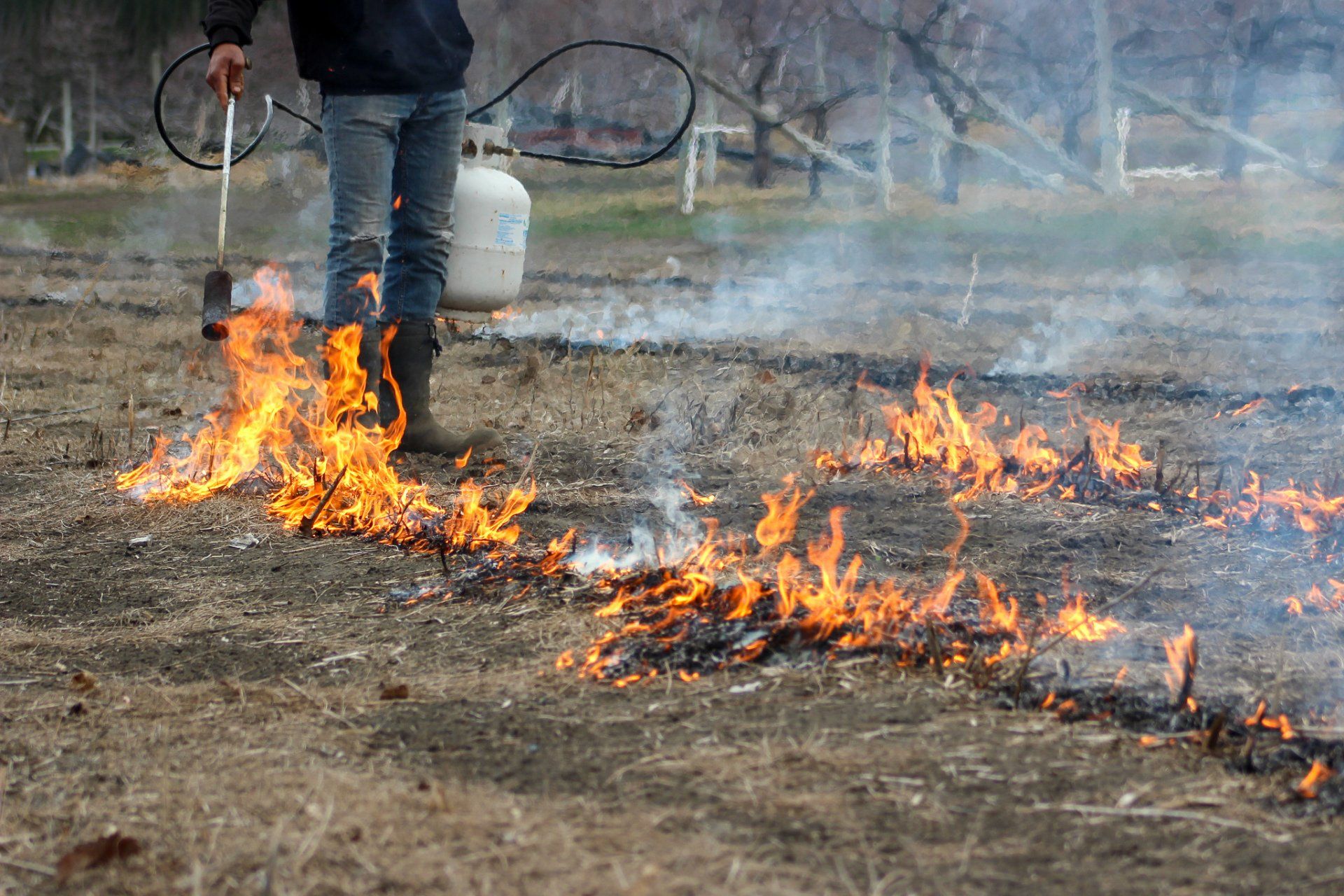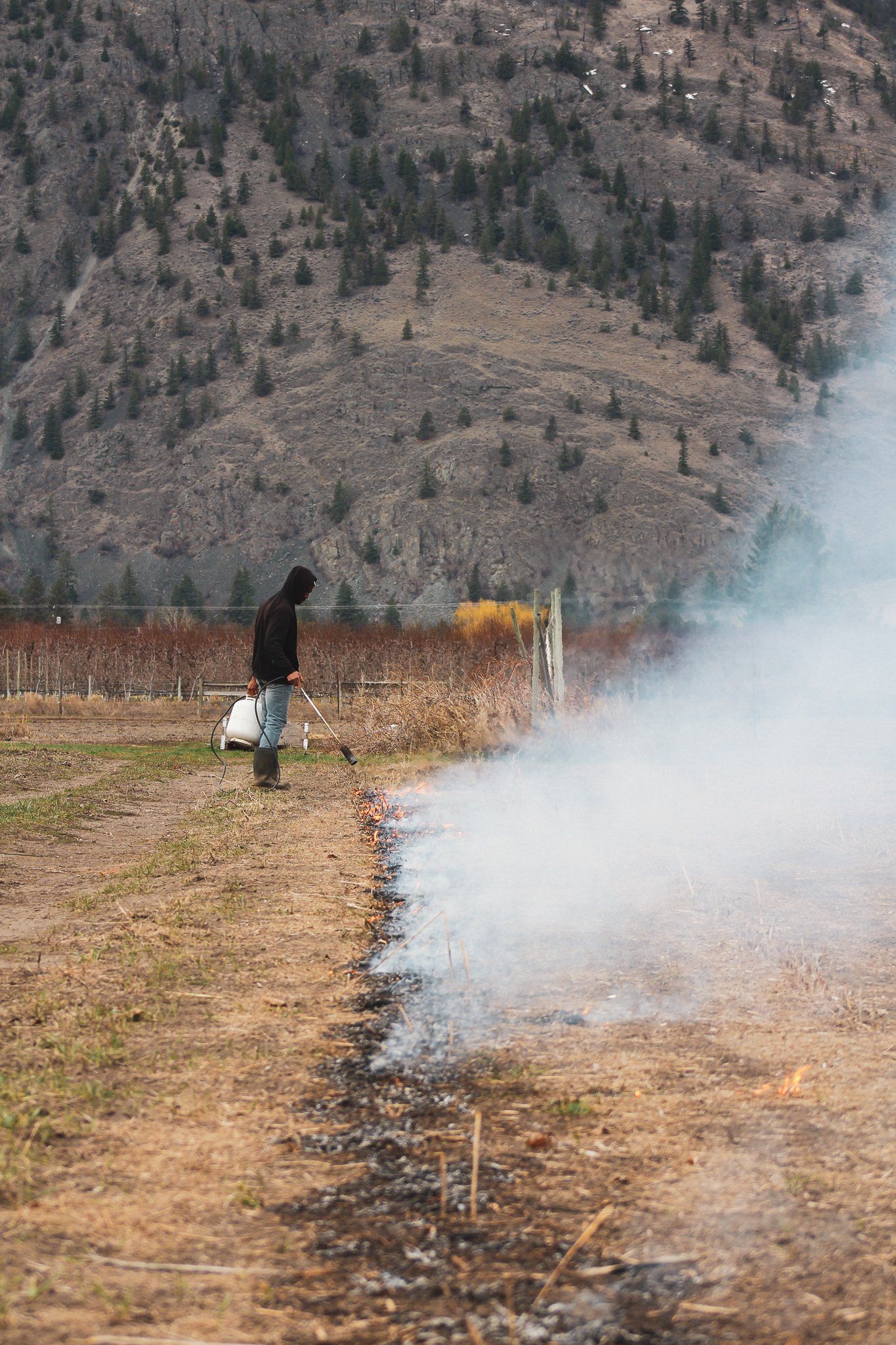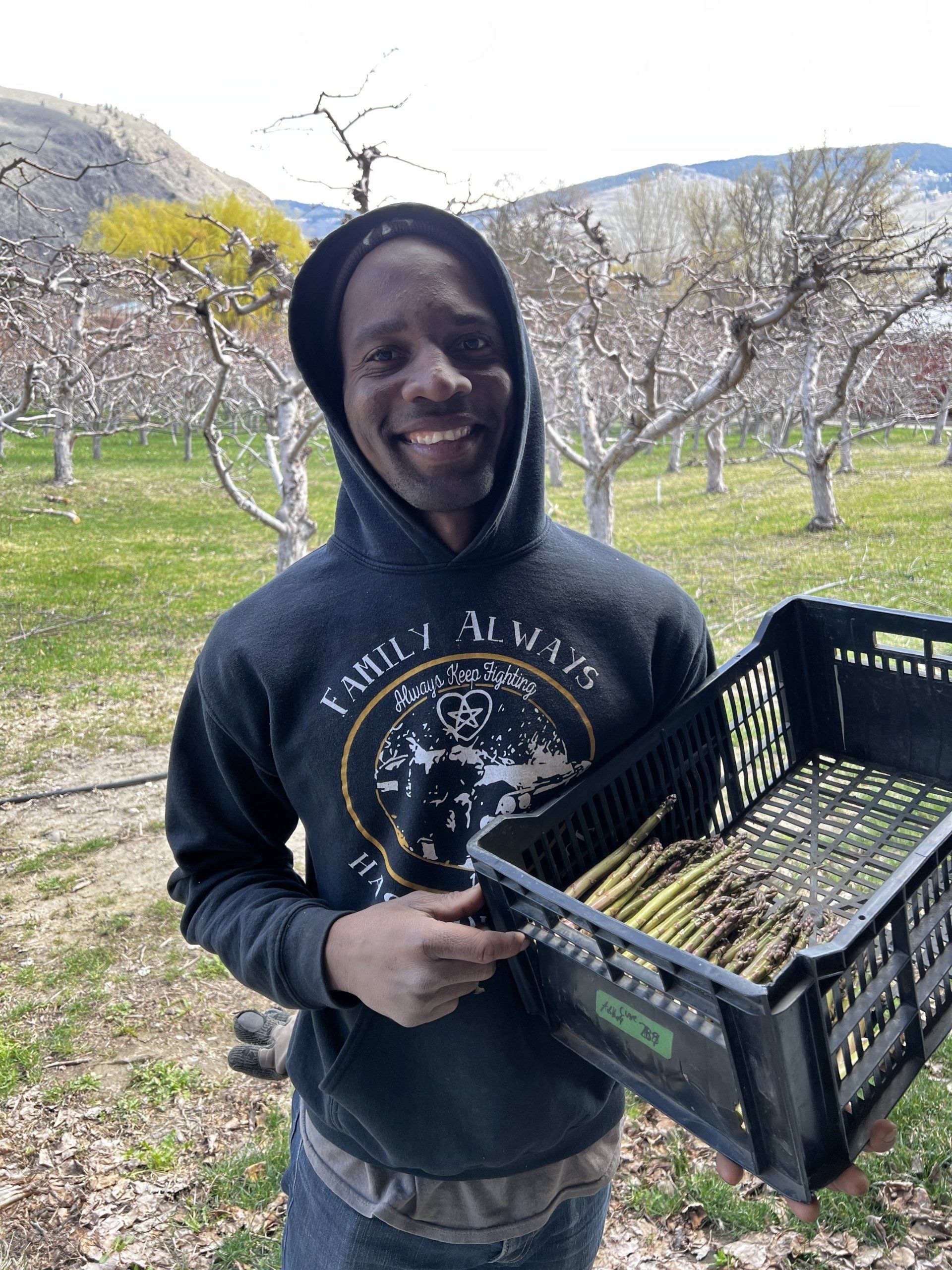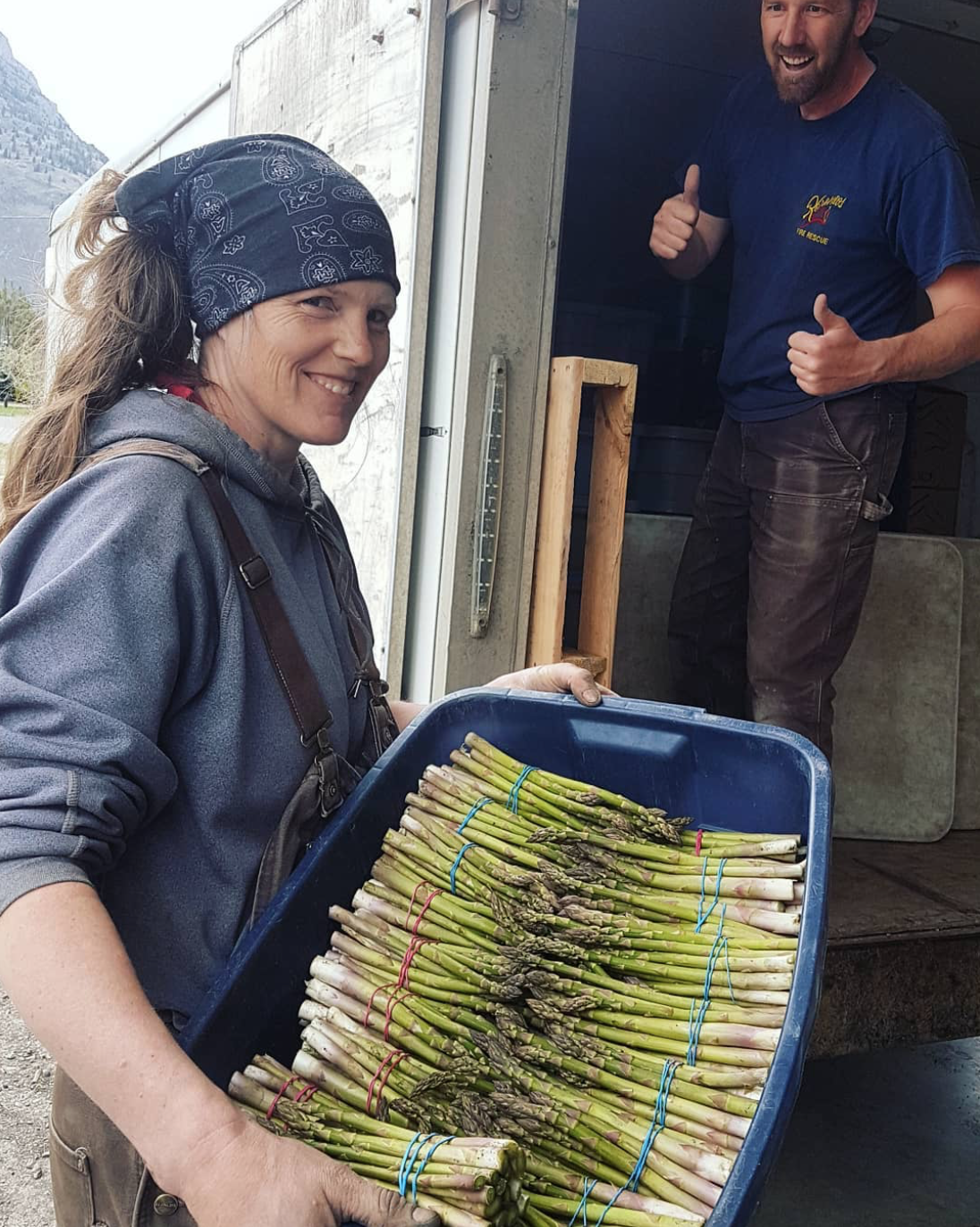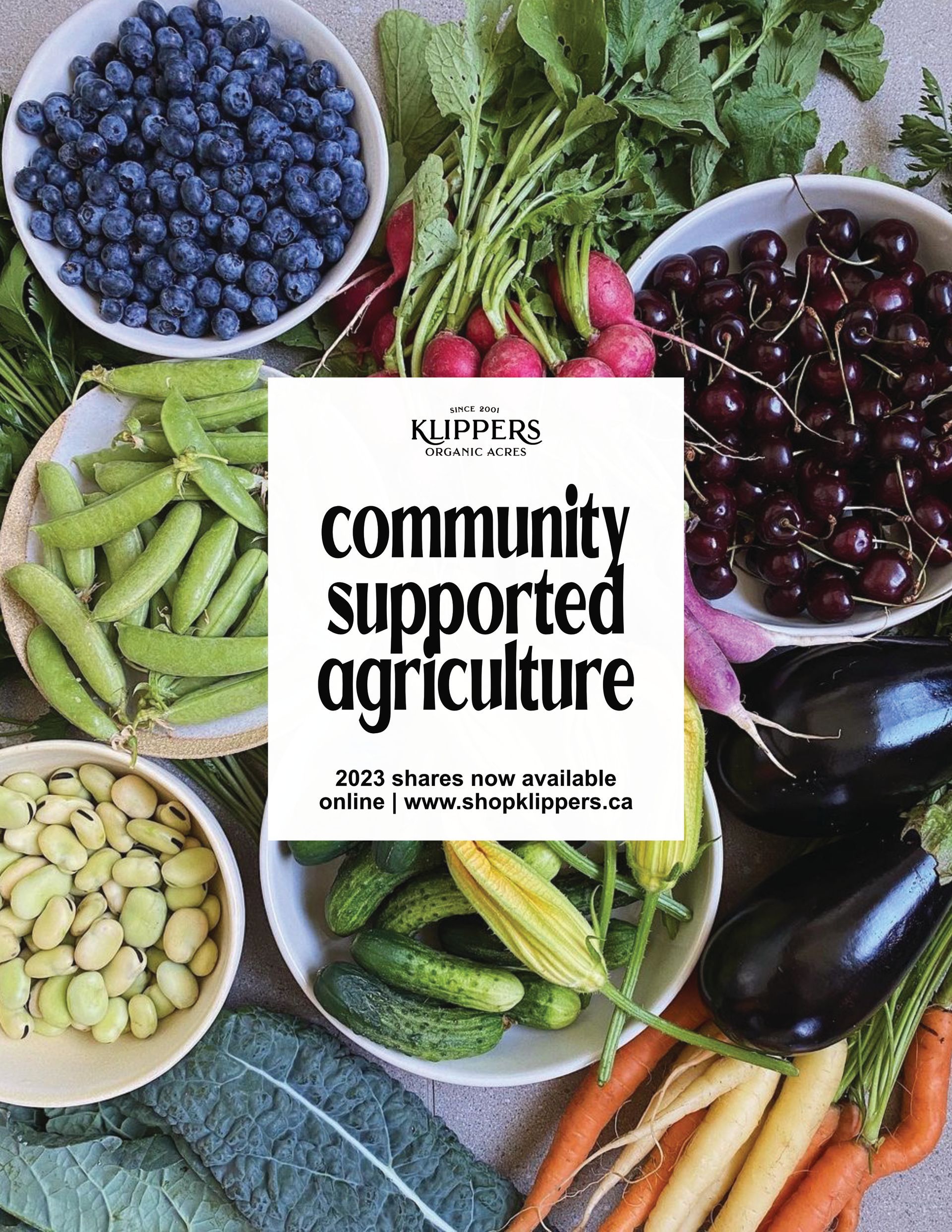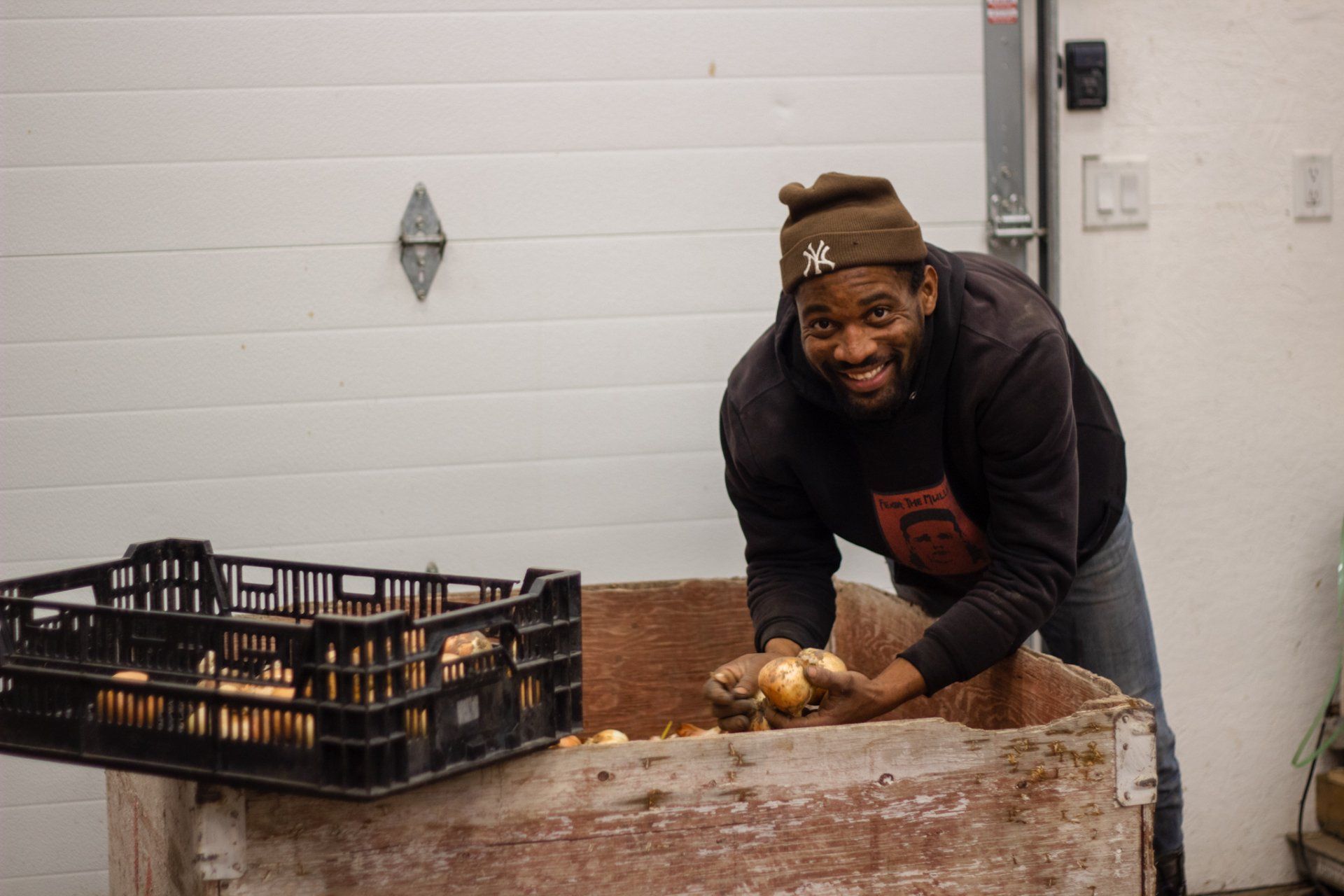Growing Asparagus & Why We Burn the Asparagus Field Annually
Here in Cawston, our first asparagus spears of the year are beginning to pop up… and to us, this is a sure sign that spring is here!
Asparagus has been cultivated for centuries for a number of reasons. The tasty spears of asparagus pair well with a multitude of dishes and provide a great lineup of health benefits to boot. Asparagus is high in antioxidants and provides a good source of vitamins A, C, E, and K as well as folate and potassium to any diet. Additionally, asparagus is quite simple to grow using organic practices. All that’s needed is some healthy soil, some good sun exposure, some fire for pest and weed management… and most importantly, some patience.
Planting & Growing Asparagus
Asparagus is a perennial plant which means that it’s edible spears grow back year after year. In fact, once established an asparagus field can live up to 20 years! Without proper pest management and weed control techniques, however, organic asparagus would not grow to its fullest potential.
In order for asparagus to thrive, it has to be planted in a field where it will receive as much sunlight as possible. Of course, soil health is extremely important in growing healthy asparagus as well (ie. fertile, loose, & well-draining soil). Integrating compost into the soil is another sure way to encourage high levels of soil nutrition for new asparagus plants. Once planted, its time for farmers to test their patience. During the first 2 years after planting, the asparagus plants become established. Although the crowns will typically send up some delicate spears a year after being planted, it is best to let them grow through the first year and not harvest until the next year.
The Burn
Weed and pest control are critical factors to the well-being of asparagus crops during all periods of their lives. Here in Cawston, as one of our “Introduction to Spring”
routines, we always burn off the asparagus bed in March to prepare for the first asparagus harvest that usually occurs in mid-April (weather dependent). During this burn, we ignite a quick blaze overtop of where the dead stems of last years crop lie. This burn warms the soil and furthermore leaves a black, ashy film on top of the soil’s surface which helps to absorb heat for the new year’s asparagus spears.
Because the roots of asparagus become hearty and stable underground, the asparagus can handle the quick controlled burn. Most pests and weeds, however, cannot. Ultimately, this burn allows for a warm and fresh (pest-free) environment for the new asparagus spears to enter into.
It is important to note that the burn always occurs on a cool, wind-free day and that the flames & smoke never grow bigger than they need to be to do the trick (see photos).
The Harvest
Once the asparagus spears reach approximately 8 inches above the soil line, we simply cut the spears at ground level. After the first harvest, the asparagus continues to pop up, which means that for a remaining six to eight weeks (weather depending), we can continue harvesting, selling, and cooking our farm-fresh asparagus. Once we begin to notice a decreased production and vigor in the plants, we stop harvesting and let the plant store energy and continue building root systems for next year…& that’s basically all there is to growing asparagus!
Writing this certainly has us looking forward to our first asparagus harvest of the season! We hope you are as excited as we are! Overall, we believe that like many vegetables, no matter how fresh asparagus might look in the supermarket, it will never compare to the incredible taste of farm-fresh asparagus spears.
Stay tuned for a 2022 asparagus update on our social channels & let us know what other crops you would be interested in learning more about!
Ps. As always, thank you for supporting local farmers and local food systems.
- The Klippers Organic Acres team


